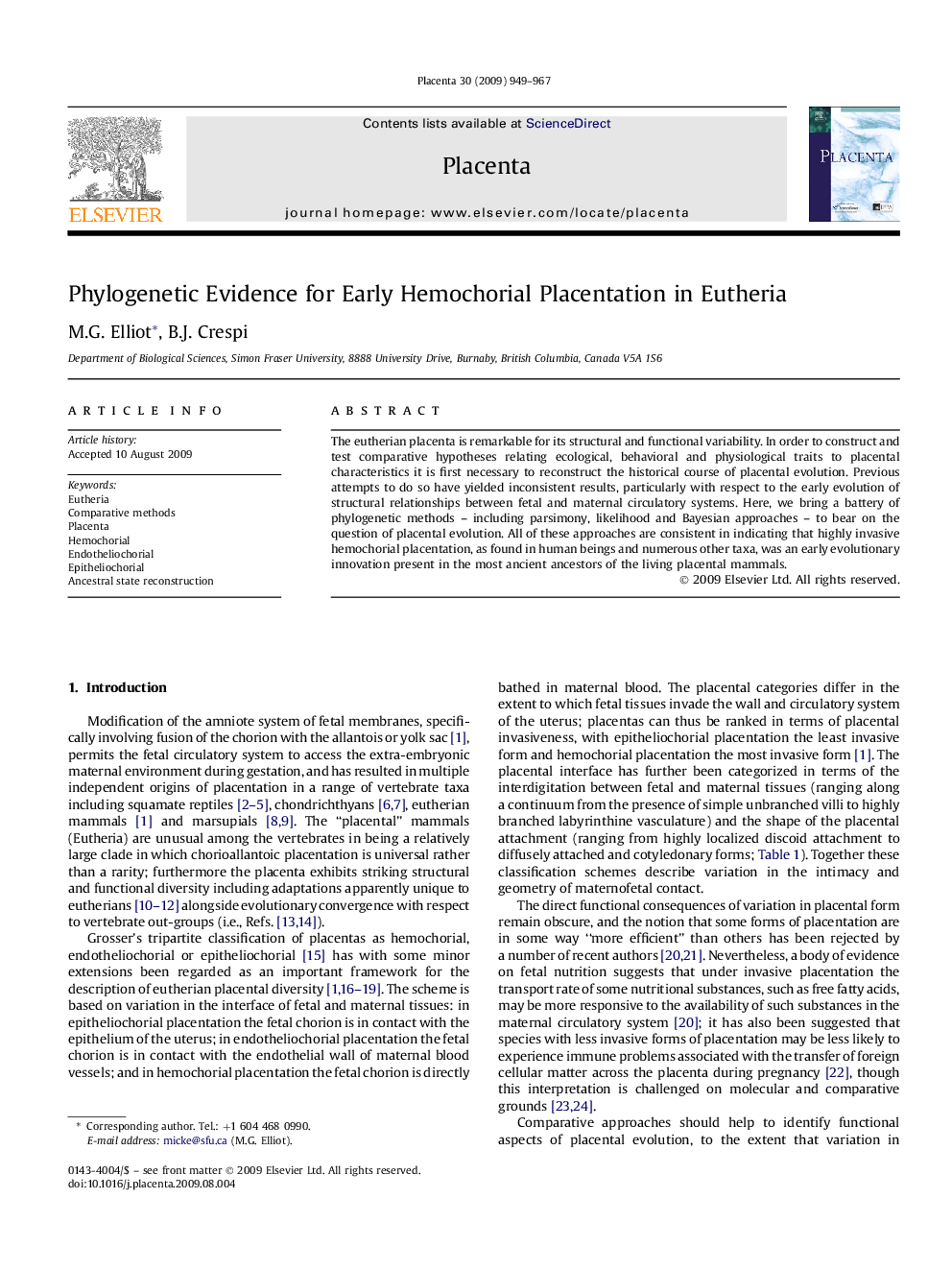| Article ID | Journal | Published Year | Pages | File Type |
|---|---|---|---|---|
| 2789771 | Placenta | 2009 | 19 Pages |
The eutherian placenta is remarkable for its structural and functional variability. In order to construct and test comparative hypotheses relating ecological, behavioral and physiological traits to placental characteristics it is first necessary to reconstruct the historical course of placental evolution. Previous attempts to do so have yielded inconsistent results, particularly with respect to the early evolution of structural relationships between fetal and maternal circulatory systems. Here, we bring a battery of phylogenetic methods – including parsimony, likelihood and Bayesian approaches – to bear on the question of placental evolution. All of these approaches are consistent in indicating that highly invasive hemochorial placentation, as found in human beings and numerous other taxa, was an early evolutionary innovation present in the most ancient ancestors of the living placental mammals.
